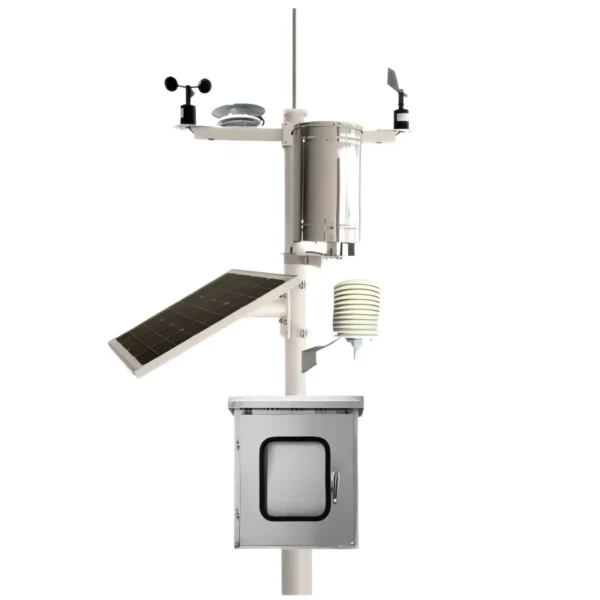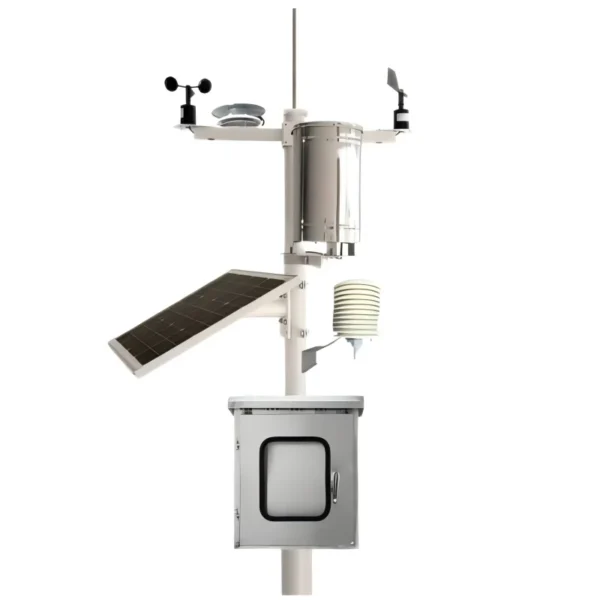
# Automatic Weather Station: Definition and Functionality
An Automatic Weather Station (AWS) is a sophisticated system designed to collect and record meteorological data without the need for constant human intervention. These stations are equipped with various sensors that measure environmental parameters such as temperature, humidity, wind speed, wind direction, rainfall, and atmospheric pressure. The data collected by AWS is crucial for weather forecasting, climate research, and various applications in agriculture, aviation, and disaster management.
## Components of an Automatic Weather Station
An AWS typically consists of several key components:
– Sensors: These are the primary devices that measure environmental parameters. Common sensors include thermometers for temperature, hygrometers for humidity, anemometers for wind speed, wind vanes for wind direction, rain gauges for precipitation, and barometers for atmospheric pressure.
– Data Logger: This component records the data collected by the sensors. It stores the information in a digital format, which can be accessed and analyzed later.
– Power Supply: AWS units are often powered by solar panels, batteries, or a combination of both to ensure continuous operation, especially in remote locations.
– Communication System: To transmit the collected data to a central database or a remote user, AWS units are equipped with communication modules such as GSM, satellite, or radio transmitters.
## Functionality of an Automatic Weather Station
The primary function of an AWS is to provide accurate and timely weather data. Here’s how it works:
– Data Collection: Sensors continuously monitor and measure environmental conditions. For example, a thermometer will record temperature changes, while an anemometer will measure wind speed.
– Data Recording: The data logger collects and stores the information from the sensors. This data is typically timestamped to provide a chronological record of weather conditions.
– Data Transmission: The communication system sends the recorded data to a central server or a remote user. This can be done in real-time or at scheduled intervals, depending on the setup.
– Data Analysis: Once the data reaches the central server, it can be analyzed using specialized software. This analysis helps in generating weather forecasts, studying climate patterns, and making informed decisions in various sectors.
## Applications of Automatic Weather Stations
AWS units have a wide range of applications:
– Weather Forecasting: Meteorologists use data from AWS to predict weather conditions, which is essential for planning daily activities and preparing for severe weather events.
– Agriculture: Farmers rely on AWS data to make informed decisions about planting, irrigation, and harvesting. Accurate weather information helps in optimizing crop yields and reducing losses.
– Aviation: Airports use AWS to monitor weather conditions, ensuring the safety of flights. Real-time data helps in managing takeoffs, landings, and in-flight operations.
– Disaster Management: AWS data is crucial for predicting and managing natural disasters such as hurricanes, floods, and droughts. Early warnings can save lives and reduce property damage.
## Conclusion
Automatic Weather Stations play a vital role in modern meteorology and various other fields. By providing accurate and timely weather data, AWS units help in making informed decisions, improving safety, and enhancing the quality of life. As technology advances, the capabilities of AWS are expected to grow, making them even more indispensable in our daily lives.
Keyword: what is automatic weather station
